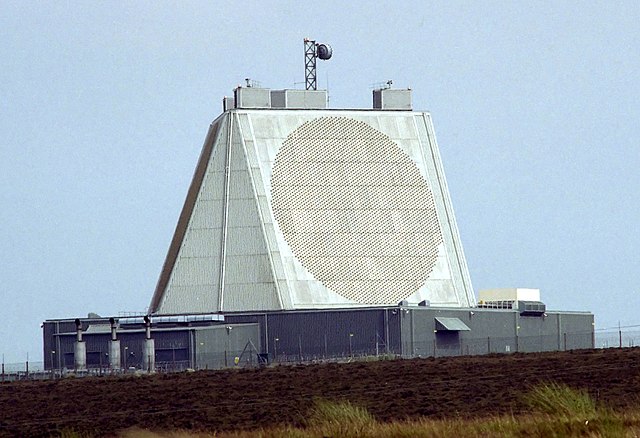Brilliant Pebbles was a ballistic missile defense (BMD) system proposed by Lowell Wood and Edward Teller of the Lawrence Livermore National Laboratory (LLNL) in 1987, near the end of the Cold War. The system would consist of thousands of small satellites, each with missiles similar to conventional heat seeking missiles, placed in low Earth orbit constellations so that hundreds would be above the Soviet Union at all times. If the Soviets launched its ICBM fleet, the pebbles would detect their rocket motors using infrared seekers and collide with them. Because the pebble strikes the ICBM before the latter could release its warheads, each pebble could destroy several warheads with one shot.
A pebble emerges from its "life jacket" just prior to launch. This is an earlier model before the GPALS upgrades.
Daniel Graham proposed the Smart Rocks concept that ultimately led to Brilliant Pebbles.
James Abrahamson, director of the SDIO, initially dismissed the Smart Rocks concept, but later selected a modified version for the SDI mission.
Bush and Quayle remained vocal supporters of the program as the strategic outlook changed with the ending of the Cold War.
Missile defense is a system, weapon, or technology involved in the detection, tracking, interception, and also the destruction of attacking missiles. Conceived as a defense against nuclear-armed intercontinental ballistic missiles (ICBMs), its application has broadened to include shorter-ranged non-nuclear tactical and theater missiles.
The Arrow 2 anti-ballistic missile
The Aegis Ballistic Missile Defense System. A RIM-161 Standard Missile 3 anti-ballistic missile is launched from USS Shiloh, a US Navy Ticonderoga-class cruiser.
Phased Array Ballistic Missile Early Warning System at RAF Fylingdales
India's Advanced Air Defense (AAD) endo-atmospheric anti-ballistic missile








